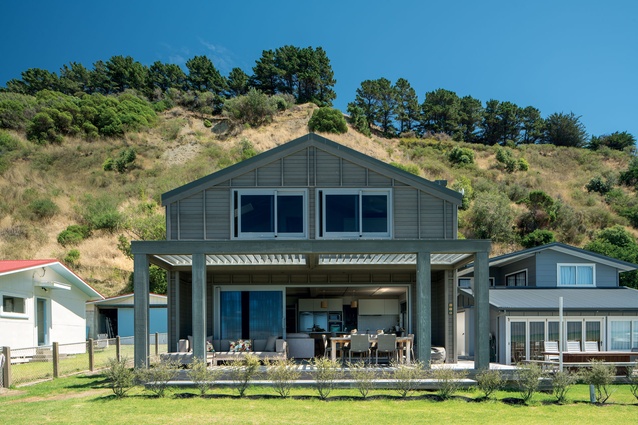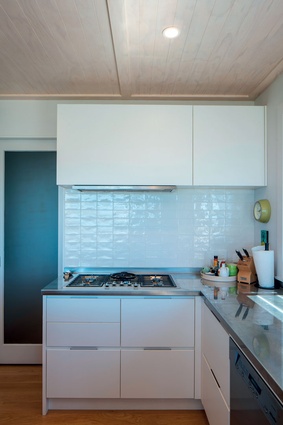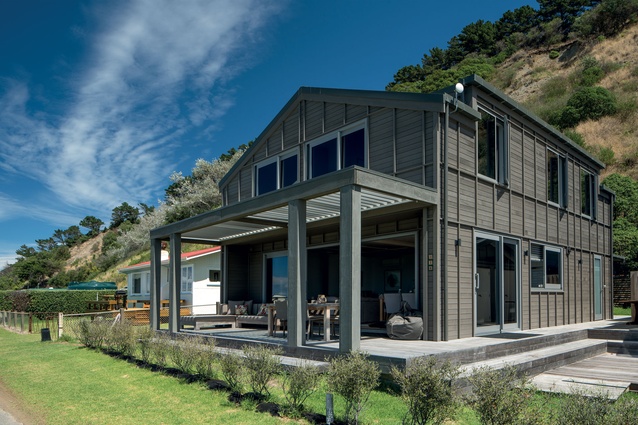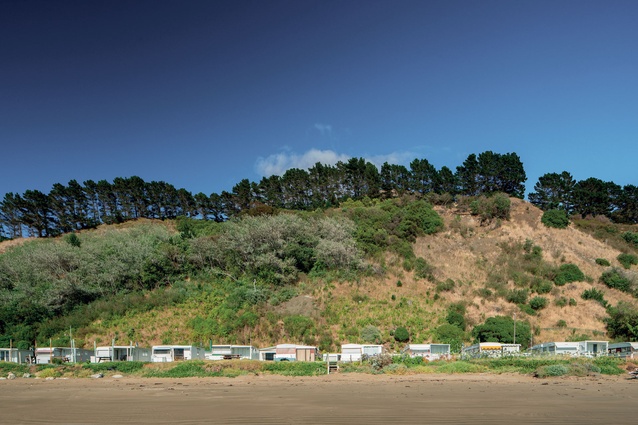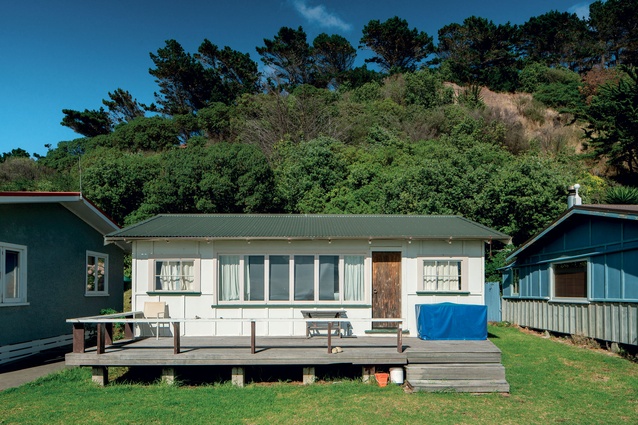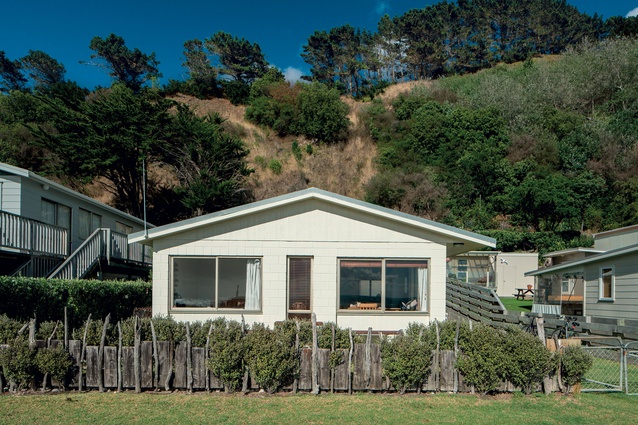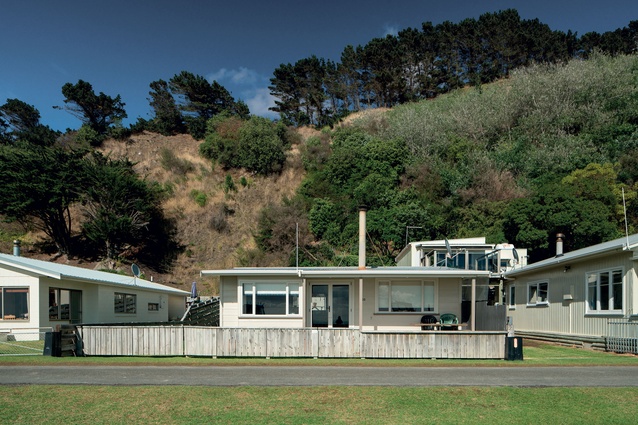The modern bach: Pourerere Beach House
With a simple, social layout and a combination of modest materials, this Hawke’s Bay beach house fits with its original bach neighbours.
The small east coast settlement of Pourerere in the Hawke’s Bay consists of a narrow road and a strip of baches, many of which date back to the 1920s, spread along a slice of land at the base of a sea cliff. Judi Keith-Brown and Ewan Brown – both Wellington-based architects – found their dream place there seven years ago in the form of a traditional bach, which they purchased just the day after viewing. “It was love at first sight,” says Judi, who wrote her final year paper at architecture school on New Zealand baches.
Having settled into the beach community at Pourerere – where “you get up in the morning and go eat toast on the neighbour’s deck; it’s fantastic” – they were approached by a neighbour whose bach was beyond repair. They asked Judi to create a new home in its place, something that would fit with the traditional baches and provide a relaxed, beachside lifestyle.

“So it was like, how do you design something that is not going to offend anyone, and respect the idea of a bach without being too pretentious?” explains Judi. “Most of the baches have a simple gable roof at a 15-degree pitch. Usually the main living area is on the ground looking out over the road. If you want to interact with the street, you go to the front; if you want privacy, you go to the back.”
Following the lead of the neighbouring houses, Judi designed the bach with sliding doors opening to a wide, welcoming deck at the front. This deck is covered with louvres, which can be closed off in rain or opened up to let the sun in. A rear deck allows the homeowners to soak up the sun at all hours, with or without toast-eating visitors.

“I knew the sizes of the bedrooms in our bach worked well, so I used the same size for their bach. I also used the same tongue-and-groove style for the ceilings, and I sloped the ceilings on the upper storey so that the house hugged the ground, despite it having two storeys.”
The kitchen is laid out for entertaining, with an island bench central to the design, so the neighbours can gather around for a batch of whitebait fritters. The homeowner requested that the sink be placed beside a north-facing window so she could look out to sea and have an eye on the goings on in the neighbourhood. A walk-in chiller provides plenty of space for the catch of the day, which the homeowners often share around with other bach owners.

Three skylights provide air and light to the home and are opened three times a day on a timer (unless they sense rain), which means the house can be aired regularly even when the homeowners aren’t there. Despite these modern upgrades, the house has been well-received by the community, which sounds very close-knit. “We have so many lovely stories about the people we have met at Pourerere,” says Judi. “It is such a nice contrast to how we live in Wellington.”
MATERIAL SELECTOR
Architect Judi Keith-Brown discusses the design and materials used to create a modern bach feel in the Pourerere Beach House.
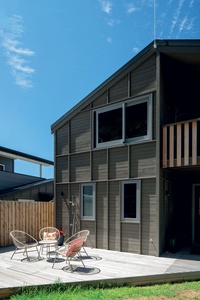
How does the design merge with the surrounding houses?
I tried to reflect the simple rooflines and modest materials, proportions and detailing of the other baches. All of the baches have living rooms and, often, one bedroom at the front looking out to the sea but no hallways and very simple planning.
As this house has two storeys, I wanted it to hug the ground as much as possible, so I created sloped ceilings upstairs. The cladding is Resene stained cedar, matching the rustic look of the neighbouring houses. We chose an aluminium roof that will survive the rigours of sea air.
How did you create a bach feel inside?
A lot of the baches in Pourerere have tongue-and-groove ceilings, so we referenced this using tongue-and-groove ply with a Resene whitewash. In the kitchen, I found some white tiles that look quite handmade and the floor has wide wooden boards; again, similar to the older baches. People live differently in baches, so the spaces are more sociable and open. The clients wanted the space to feel welcoming and comfortable.

